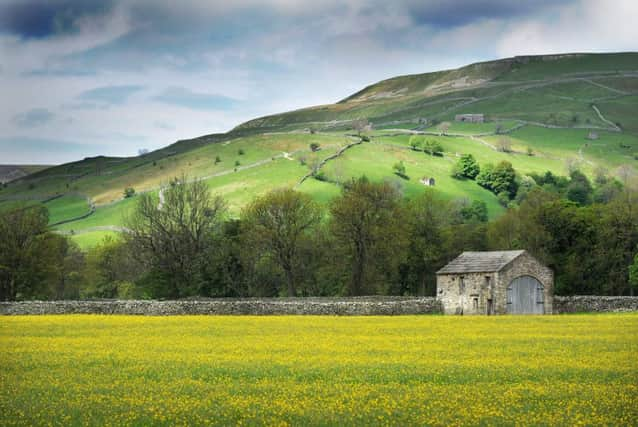Preservation day aims to revive region's threatened meadows


Only around two per cent of the wildflower meadows known to exist in the 1930s remain. Some 7.5m acres of meadow have been lost, with more still being destroyed, the lottery-funded consortium, Save Our Magnificent Meadows, estimates.
It has designated Saturday, July 1 as this year’s National Meadows Day, with a series of events planned across Yorkshire.
Advertisement
Hide AdAdvertisement
Hide AdThey include wildflower walks and bug hunting activities at Nethergill Farm near Buckden, where the Dales Way runs alongside the meadow.
The plot can be accessed by public footpath but on July 1, visitors will be able to explore areas off the beaten track.
Other events are being arranged in York, Swaledale and, across the border, in the Forest of Bowland.
Sarah Pettifer, of the Yorkshire Dales Millennium Trust, said: “Meadows support a huge range of wildlife, including wildflowers, butterflies and birds.
Advertisement
Hide AdAdvertisement
Hide Ad“Every parish used to have one, but with the rise in intensive farming since the war, they have shrunk. This day is about protecting the meadows that do survive and trying to reinstate others.”
Until the early 20th century, meadows provided grazing and hay for livestock as well as employment, food and medicine for their communities, and were part of the fabric of community life.
Many of those that remain are on small plots, vulnerable to destruction. Grasslands do not have the protection enjoyed by woodlands and wetlands.
Among the oldest in Yorkshire is Raincliffe, a mixed woodland meadow at Scarborough, which can be traced back to the 13th century and is rich in knapweed, bird’s-foot-trefoil, oxeye daisy, yellow rattle, cowslip, ragged robin and orchid.
Advertisement
Hide AdAdvertisement
Hide AdMid-June to mid-July, before farmers cut the hay, are considered the best times for visiting meadows, though those in the Dales uplands are typically harvested a few weeks later.
The Dales Millennium Trust says it is working with farmers, landowners and contractors to harvest ripe wildflower seeds from thriving hay meadows and spread them on to meadows nearby that have lost some of their botanical diversity.
Key species have been reintroduced to more than 650 hectares so far, with plans to improve the diversity of species in a further 100 hectares of degraded meadows across the region this summer.
The Yorkshire Arboretum at York is hosting an event on July 7 on how best to manage a hay meadow, with instruction on how to identify typical meadow plants and demonstrations of scythes, tractors and mowers.
The wild plant conservation charity, Plantlife, is behind the campaign to revitalise meadowland, supported by wildlife trusts around the country.